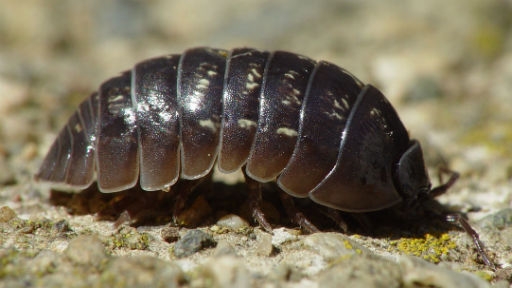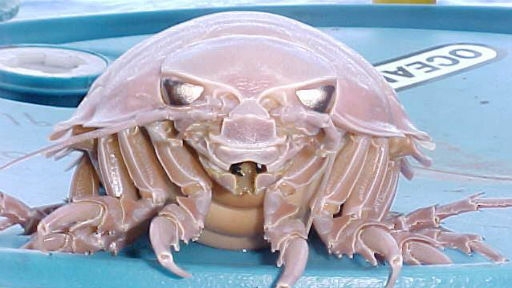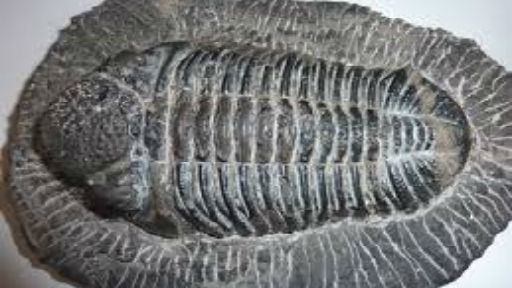
If you’ve ever poked a pillbug (or roly polie, if you prefer) and watched it curl up in a ball, you’ve encountered an isopod. They’re not actually bugs; they’re crustaceans. And while the terrestrial kind are small and relatively harmless, their deep-sea cousins are a little more… let’s say… intense.
There are about 20 species of giant isopods, which are closely related to other marine crustaceans like shrimp and crabs, and most of them live between 550 and 7020 feet underwater. They can be found in the Pacific Ocean off Japan, and in the South China Sea.

The prehistoric armored animals typically grow to about 14 inches or smaller in length, but in some cases they can get much, much larger. In 2010, scientists pulled up a specimen that was almost three feet long.

Giant isopods live on the seafloor, where they can burrow into the mud or clay for shelter. That far down, the ocean’s pressure can be extreme.
Scientists hypothesize some isopods get so giant because it helps them stand up to the immense pressure.

Scientists still don’t know everything about giant isopods, because their natural habitat is difficult to reach and they can vary so much. They are carnivores, and it’s believed they’re generally scavengers that eat dead animals that fall to the seafloor. Some evidence suggests, though, that they might prey on live, slow-moving animals like sea sponges.

Though they do eat, and have four sets of sharp jaws to do it with, their eating habits are tough to track. That’s because giant isopods, both those in the wild and in captivity, only eat a few times per year.

Dee Ann Auten, an Aquarist at the Aquarium of the Pacific, cares for four giant isopods in the aquarium’s Wonders of the Deep gallery. Though she attempts to feed them every day, she’s almost never successful.
“One of them ate twice last year, one of them ate four times last year, one of them ate almost ten times last year,” she told Mental Floss. “Another one I think was seven times. It’s fascinating and it’s rewarding when you put so much effort into taking care of them and a lot of patience and you finally figure out what they like to eat.”

Living on such small amounts of food means the isopods don’t have a lot of energy. They live in a constant state of semi-hibernation, slowing their metabolism and often remaining in the same place for months – or even years – at a time.
Though deep-ocean-dwelling giant isopods appear to be a far cry from their pillbug cousins in your garden, they do have one big thing in common. When threatened, these isopods will also curl up into a ball.
“If it’s eating something and a fish is trying to come over and take the food from them or bite their appendages, they’ll roll over to keep their food or to keep their soft organs underneath protected,” Auten said. ”They would cover themselves so that nothing will attach to them. Or they’ll hide in a crevasse somewhere so that nothing can find them.”
Check out the isopods at 0:30!




